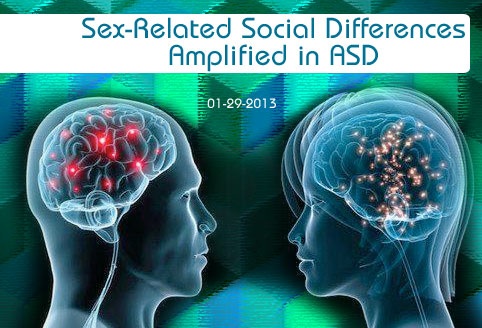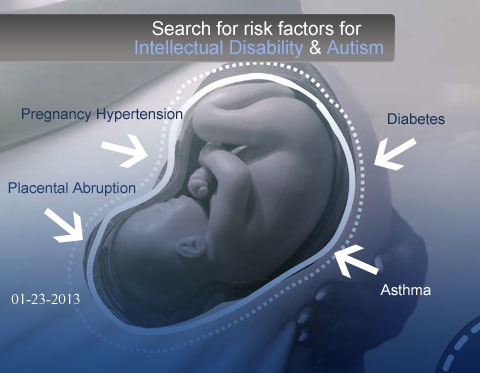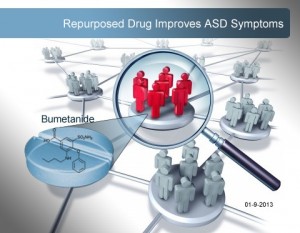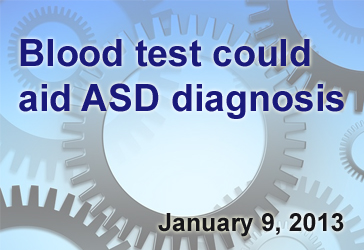Archives
January, 2013
Select a different month in the archive
Grant Will Help Study Employment Programs in Virginia
By Shana R. Spindler, PhD on January 31, 2013
News Brief: Virginia Commonwealth University (VCU), the Virginia Department for Aging and Rehabilitative Services, and Henrico County Public Schools received a federally funded, five-year, .5 million grant to boost research on how to help young adults with autism enter the workforce upon graduation from high school.
According to VCU, close to 90 percent of young adults with autism are unemployed. The Virginia-based groups found success with a nine-month internship program for young adults with autism. Through the internship, nearly 88 percent of the program’s participants secured competitive employment. The groups hope to use the grant to explore their internship model with larger numbers of autistic youth and to determine if the internships can improve social and cognitive behaviors.
Help me understand :
| Source(s) : |
| Tweet |
Sex-Related Social Differences Amplified in ASD
By Chelsea E. Toledo, M.A. on January 30, 2013

Background: Autism Spectrum Disorder (ASD) appears about four times more frequently in males than in females. In typically developing individuals, women often score better than men on tests for social cognition and empathy—traits for which autistic individuals often show deficits. Therefore, some researchers have suggested that ASD could be a disorder in which male social patterns in the brain are exacerbated, known as the “extreme male brain theory” of autism.
What’s New: On December 26, 2012, the online journal PLoS ONE published a study examining whether women and men have markedly different social brain functions and whether those sex-related differences are prevalent in individuals with ASD. The authors measured the brain activity, according to blood flow patterns in the brain, of 25 men and 22 women without ASD and observed patterned differences in the way male and female subjects made decisions based on facial expressions, especially in the inferior frontal cortex of the brain. They repeated the same test on twelve men with ASD and found that their inferior frontal cortices were more active than their twelve male counterparts without the disorder.
Why it’s important: This study offers one line of support for the “extreme male brain theory” as an explanation for why ASD is more common in males than in females. Important questions remain about the causes of amplified male social patterns in ASD and preventative or therapeutic measures that can be taken.
Help me understand :
| Source(s) : |
| Tweet |
Scientists Explore Relationship between ASD and ID
By Stacy W. Kish on January 23, 2013

Background: Patients diagnosed with Autism Spectrum Disorder (ASD) and Intellectual Disability (ID) often exhibit similar symptoms—impaired communications, developmental delay, repetitive behaviors, and social difficulties. Scientists remain uncertain how genetic or environmental factors contribute to each condition.
What’s new: A group of scientists at Telethon Institute for Child Health Research in Perth, Australia examined a variety of factors that occur before and shortly after childbirth that could place a child on a trajectory toward ASD or ID. They compared patients with ID, ASD with ID, and ASD without ID. Their results associate ASD with maternal or placental infection, which may affect early brain development. Whereas, the researchers found a stronger correlation to other pregnancy factors, such as diabetes, pregnancy hypertension, asthma, urinary tract infections, and placental abruption, in the development of ID. Interestingly, poor fetal growth correlated with ID as well as ASD with ID, but not ASD without ID.
Why it’s important: This work differentiates some of the prenatal factors that may associate with each disorder and highlights the importance of differentiating ASDs with and without ID when investigating ASD causes, preventative measures, and targeted therapies.
Help me understand :
| Source(s) : |
| Tweet |
Repurposed Drug Improves ASD Symptoms in Children
By Mark N. Ziats on January 9, 2013

Background: Previous research has indicated that brain signaling using a neurotransmitter known as GABA could be disrupted in children with Autism Spectrum Disorders (ASD). Brain cells use the molecule chloride to modulate the levels of GABA within the brain, and many drugs used for other diseases work by modulating chloride levels. A small pilot study previously suggested drugs which modulate chloride levels in the brain may be beneficial to children with autism.
What’s new: In a study recently published in the journal Translational Psychiatry, researchers tested children with autism or Asperger sundrome using the chloride-altering drug bumetanide, which is known to be safe in children when used for other indications.
The study tested the effect of bumetanide in a double-blinded, placebo-controlled trial of sixty children (ages 3-11) with ASD. The children received either bumetanide or the placebo for 3 months, and were tested for improvement on three separate behavioral rating scales. The results demonstrated that children on bumetanide were significantly more likely to experience improvements in their symptom severity—as determined by improvements in rating scale scores—than autistic children who received the placebo. Importantly, the drug was well-tolerated and caused minimal side effects in all children who received it over the course of the 3 months.
Why it’s important: This study provides evidence that adjusting GABA levels in the brain by modulating chloride levels improves the behavioral symptoms of autism. Because many drugs that act on chloride levels are already known to be safe in children, it is hoped that larger studies can be pursued in order to bring novel treatments targeting this pathways to the clinic.
Help me understand :
| Source(s) : |
| Tweet |
Blood Test Could Aid Autism Diagnosis
By Chelsea E. Toledo, M.A. on January 9, 2013

Background: Over the past few decades, the rate of diagnosis for Autism Spectrum Disorder (ASD) has increased to about 1 in 88 children. While studies have shown that early diagnosis is linked to better cognitive outcomes in children with ASD, most children are not diagnosed until after they reach the age of 4, according to the Centers for Disease Control. This is due in part to limited diagnostic tools, such as traditional interviews and observation-based evaluations.
What’s New: On December 5, 2012, the online journal PLoS ONE published the largest study to date of blood biomarkers as a diagnostic target for ASD. The researchers identified a set of 55 genes that were expressed differently in the blood of 66 autistic males when compared to 33 of their typically developing counterparts. They then ran a blood test seeking those same genes out in 104 children with ASD and 82 without the disorder. The test achieved an accurate diagnosis 70 percent of the time overall, predicting 73 percent of cases in male children and 51 percent of cases in female children.
Why it’s important: While a blood test may not replace traditional diagnostic evaluations for ASD, the authors speculate that their method could reduce the time spent determining whether a child has the disorder, allowing for earlier intervention. This study’s small sample size and inadequate accuracy rate, however, warrant the need for additional research.
Help me understand :
| Source(s) : |
| Tweet |

